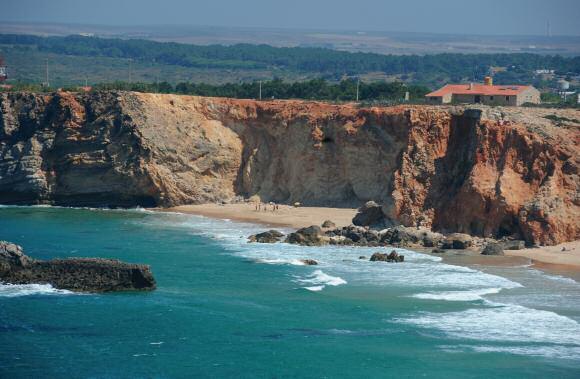AS I board the air-conditioned coach in Portimao for a tour of the Western Algarve, I’m thinking that it’s a smart idea. The forecast for today is hot, very hot – temperatures hovering around 40ºC. It’s too hot to be out in the sun all day and the coach will offer some respite between stopping-off points.
The first stop, however, comes a bit earlier than expected. It isn’t at a recognised tourist attraction; it isn’t even a quaint town or village. No, it’s a roundabout on the Portimao ring road and our coach has been encouraged to make an unscheduled stop by a Portuguese policeman standing in the road and directing our driver to a disused bit of tarmac.
How interesting. Is it a check on one of the passengers? The coach is almost new and not a clapped-out rust-bucket so it can’t be that. No, it’s our driver, or rather his tachograph, that is the focus of their attention. I never realised just how much paper these things hold, but in a jiffy the police soon have yards of this stuff unspooled and are going through the data with a fine-tooth comb.

The coach driver looks to be losing his sense of humour as the police start highlighting figures on the printout and, sure enough, that is soon followed by a ticket for some infringement. It can’t be serious for they are more than happy for our driver to continue on his way and, with a swift ‘adeus’ – goodbye – it’s back to the roundabout for the coppers as we head west to Cape St Vincent, the south-western point of Portugal and our second stop of the day. Dramatic cliffs, 200ft high, jut out into the Atlantic Ocean, stopping the sea in its tracks in spectacular style.
On a calm day the sea appears rough but when the wind picks up it is dazzlingly beautiful; waves collide with the cliffs with sound and spray to tingle your senses.
Yet just round the corner there are fine, sandy beaches, the sand polished to perfection by thousands of years of pounding from the Atlantic breakers.
The Cape is a place you want to see, but perhaps you only need an hour or so – the coach tour is perfect: back on board, air-conditioning on and next stop Sagres just a short hop away. It was here that Henry the Navigator had his base in the early 1400s. Building a fortress, setting up a school of navigation, he was an early shipping entrepreneur. He pioneered trade routes and died a wealthy man in 1460. It was here, in the school set up by Henry, that Christopher Columbus and Vasco da Gama studied before going on to greater things.
The fortress you can see today is later than that built by Henry. It dates from the 17th century, but over the years took a battering from earthquakes and pirates. You can still see the layout, and the chapel on the site is quaint.
Now for a town with a little more hustle and bustle – Lagos. I really like this place: there’s masses of history, a smashing waterfront and a town centre that’s welcoming with street cafés and bars – it really is a gem.

